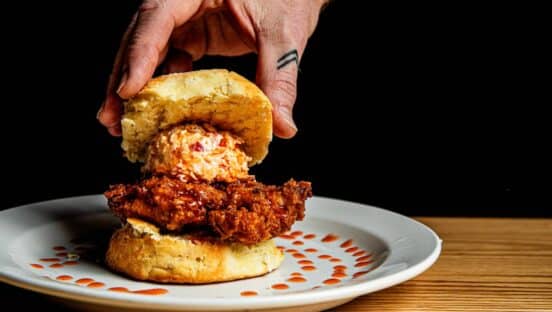The National Restaurant Association’s Conserve: Solutions for Sustainability project hosted a Webinar called “5 Things Operators Must Know About Energy Efficiency” on Thursday, July 24. The goal was to raise awareness about what restaurant operators could do to save money—and the environment.
Richard Young, senior engineer/education director for Pacific Gas and Electric Company’s Food Service Technology Center, started off the presentation by noting that all operators need to know that:
-Energy efficiency is good business
-There are many ways to save energy
-Helpful resources exist
-There many incentives to go green
Young also offered several tips on how restaurateurs can combat high energy costs and prevent unnecessary waste. To improve lighting efficiency, he recommended operators replace standard light bulbs with compact fluorescent bulbs (CFLs) for walk-ins and exhaust hoods. Benefits include less heat, which reduces AC costs; less energy required, which reduces utility bills; and longer bulb life spans, which reduces maintenance costs. However, Young warned, when a CFL bulb finally burns out, an employee often replaces it with a standard bulb. To avoid that issue, Young suggested buying fixtures that only fit energy efficient bulbs.
Other ways to reduce AC costs were also discussed, including the installation of ceiling fans and kitchen ventilation systems with variable-speed exhaust fans to create “demand ventilation.” Ceiling fans create moving air, which allow operators to raise the set point on their thermostats. With variable-speed exhaust fan control, sensors look for smoke and heat, which cuts down on running time, thus reducing the heat in your kitchen.
Operators were also warned to be vigilant about properly maintaining their stores to cut down on costs and preserve resources. Young specifically spoke about the savings found in repairing duct work and fixing leaks, citing a case study that found a tiny trickle of water can add up to 50,000 gallons per year and cost $350 in water and $500 in heating expenses annually.
Low-flow, pre-rinse spray valves were also mentioned as means to reduce water waste. The systems exert the same amount of pressure as a valve emitting more gallons per minute (gpm) but are eco-friendly. One study referenced by Young illustrated how a 4.5 gpm spray running for one hour each day for a year would cost $1,650 versus $440 for a 1.5 gpm spray.
Kate Lewis, sales and marketing manager, ENERGYSTAR Program at the U.S. Environmental Protection Agency, also took part in the Webinar, stressing that buying energy-efficient appliances is key to creating a “greener” business. During her presentation, Lewis highlighted several resources available to operators to help one’s energy footprint. Among those resources are two Web sites that offer for energy efficient appliances . The Food Service Technology Center’s site (www.fishnick.com) includes a life-cycle calculator that can help operators determine how much energy efficient equipment might save them. Information on where to purchase such cabinets, steamers, and ovens can be found at www.energystar.gov.
Lewis cited statistics which said that “62 percent of adults said they likely would choose a restaurant based on its environmental friendliness” and 21 percent of quick-service operators “intend to spend a larger proportion of their budget in 2008 on green initiatives.”
Young closed the Webinar by discussing a case study conducted by Food Service Technology Center. The study found that by analyzing its water and energy use, evolving its store design for increased efficiency, and becoming a member of the U.S. Green Building Council and part of the LEED for Retail Committee, Chipotle saw a definite decrease in its energy costs. Optimizing kitchen exhausts, for example, created a 40 percent reduction in air flow, which in turn led to “savings on fan power, heating, and cooling.” Young also revealed that Chipotle is testing LED lighting in its with a 16 watt LED replacing a 65 watt PAR 38 and a 4.9 watt LED replacing a 50 watt PAR 20.
The NRA’s environmental initiative Web site is http://conserve.restaurant.org/. The Webinar can be accessed at http://conserve.restaurant.org/news/webinar.cfm.
—Mary Fletcher King



